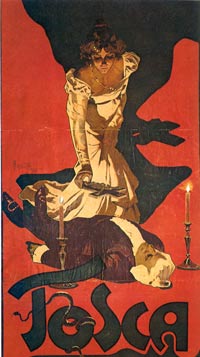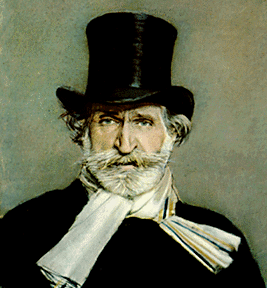From Rossini to Verdi
The 19th century in Italy brought some of the best known operas of all. These are found first of all in Rossini, a master of comedy, as in Il barbiere di Siviglia (The Barber of Seville), in which the barber Figaro abets his master Count Almaviva in his wooing of Rosina and the gulling of her guardian, old Doctor Bartolo. Rossini also tackled more serious subjects, as in his heroic melodrama Tancredi , with its ingredients of love, jealousy, misunderstanding and final resolution either, as in the first version, in a conventional happy ending, or, as in the revised version, in the hero's death. Tancredi provides a demanding title- ròle characteristic of the so- called bel canto style that Rossini so much admired. This involved a fine voice and the flexibility and evenness of tone to cope with elaborately florid vocal writing.
In Italian opera Rossini was followed by Bellini and Donizetti. The former had a mastery of extended lyrical melodies, shown in the intense romanticism of operas like Norma , with its story of love and heroic self- sacrifice by the Druid priestess of the title. Donizetti showed an equally marked dramatic sense, exemplified in Lucia di Lammermoor , based on the novel by Sir Walter Scott and including what became a popular operatic element, a mad scene for the heroine. His sense of comedy is evident in L'elisir d'amore (The Elixir of Love), with its quack doctor and forlorn lover, and in Don Pasquale , the fooling of the elderly bachelor of the title by a pair of young lovers, anxious to be united. Stock characters of Italian comedy occur in both.
The 1840s brought to prominence one of the greatest of all operatic composers. Verdi held a leading position in Italian opera for some half a century and continues to dominate operatic repertoire. From Nabucco (Nebuchadnezzar) in 1842 to Falstaff in 1893 he served, as he claimed, in the galley, to produce masterpiece after masterpiece. In these he created a very personal amalgamation of current trends of increased dramatic power and cogency, influenced at times by France and at times by Germany, but always essentially Italian in his own idiom. His career coincided with the rise of Italian nationalism and often his operas suggested a contemporary relevance. This is found, for example, in the chorus of Hebrew slaves in Nabucco and in the chorus of the oppressed people of Scotland in his Shakespearean Macbeth . It was Shakespeare, whose work had a new appeal in a period of relative freedom from earlier classical convention, who inspired Verdi's last two operas, the tragedy Otello and the fine comedy of Falstaff , based on The Merry Wives of Windsor.
Verismo and Puccini
 The later years of the century brought verismo (realism), a reflection of current literary trends, in Mascagni's Cavalleria rusticana (Rustic Chivalry), a down- to- earth story of love and jealousy in a village, peasant setting, and Leoncavallo's Pagliacci (Players). This last brought to the opera a police- court murder case, in which a jealous actor had killed his faithless wife on the stage. Pagliacci provides a famous example of the dramatic treatment of drama itself, a contrast between the actor himself and the part he is forced to play.
The later years of the century brought verismo (realism), a reflection of current literary trends, in Mascagni's Cavalleria rusticana (Rustic Chivalry), a down- to- earth story of love and jealousy in a village, peasant setting, and Leoncavallo's Pagliacci (Players). This last brought to the opera a police- court murder case, in which a jealous actor had killed his faithless wife on the stage. Pagliacci provides a famous example of the dramatic treatment of drama itself, a contrast between the actor himself and the part he is forced to play.
Realism of this kind had its effect on Puccini, whose operas form a major part of modern repertoire, from Manon Lescaut and Tosca to Turandot . While he might seek the exotic in the Japanese setting of Madama Butterfly or the China of Turandot , in Tosca, in spite of its historical setting, he presented a story of political intrigue, murder and deception of contemporary relevance. Puccini too was able, like Verdi, to provide a successful synthesis of current musical and dramatic trends.
20 th Century
Opera has, of course, continued in Italy, both in its more traditional form and in modern experiment. The story has not ended. The later 20 th century offers obvious difficulties of succinct summary, with the general musical eclecticism that has characterized music and the other arts.


|









 View opera ELISIR D'AMORE
View opera ELISIR D'AMORE

